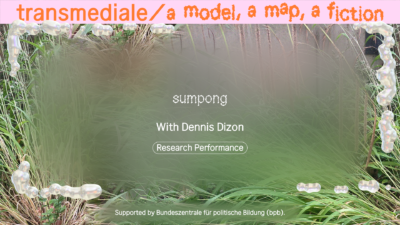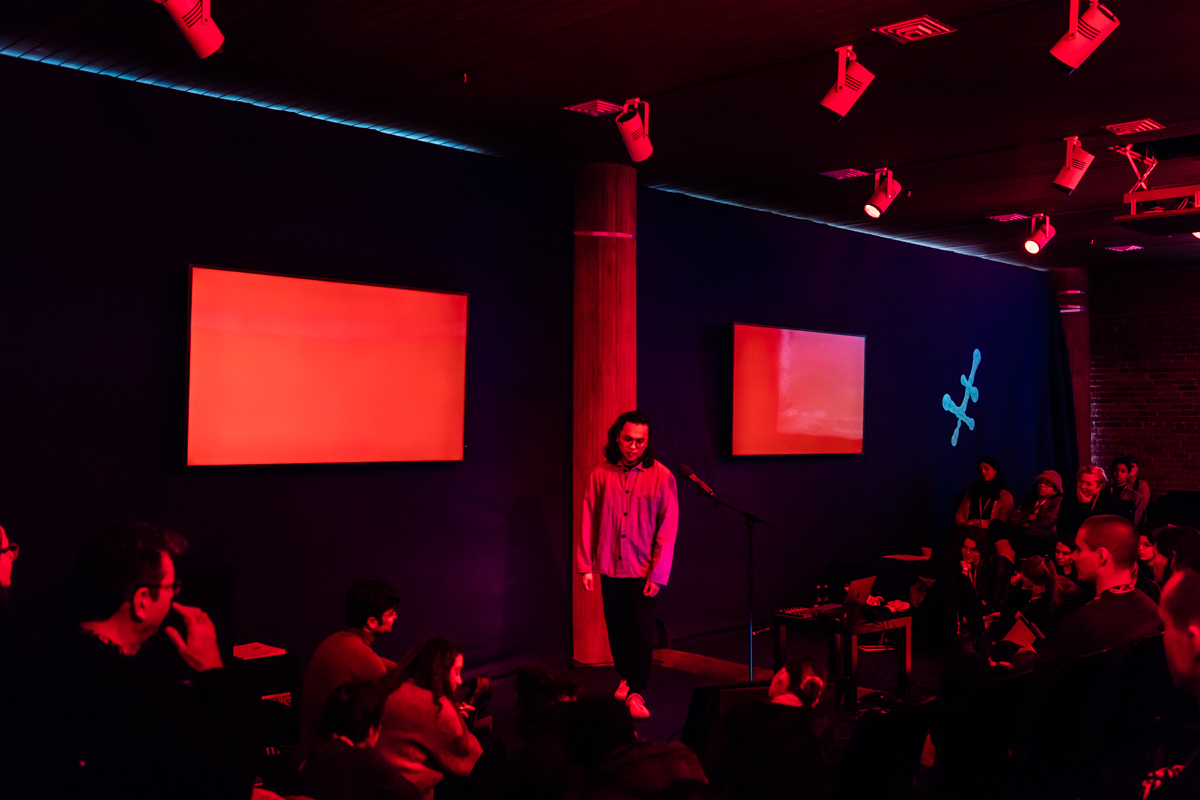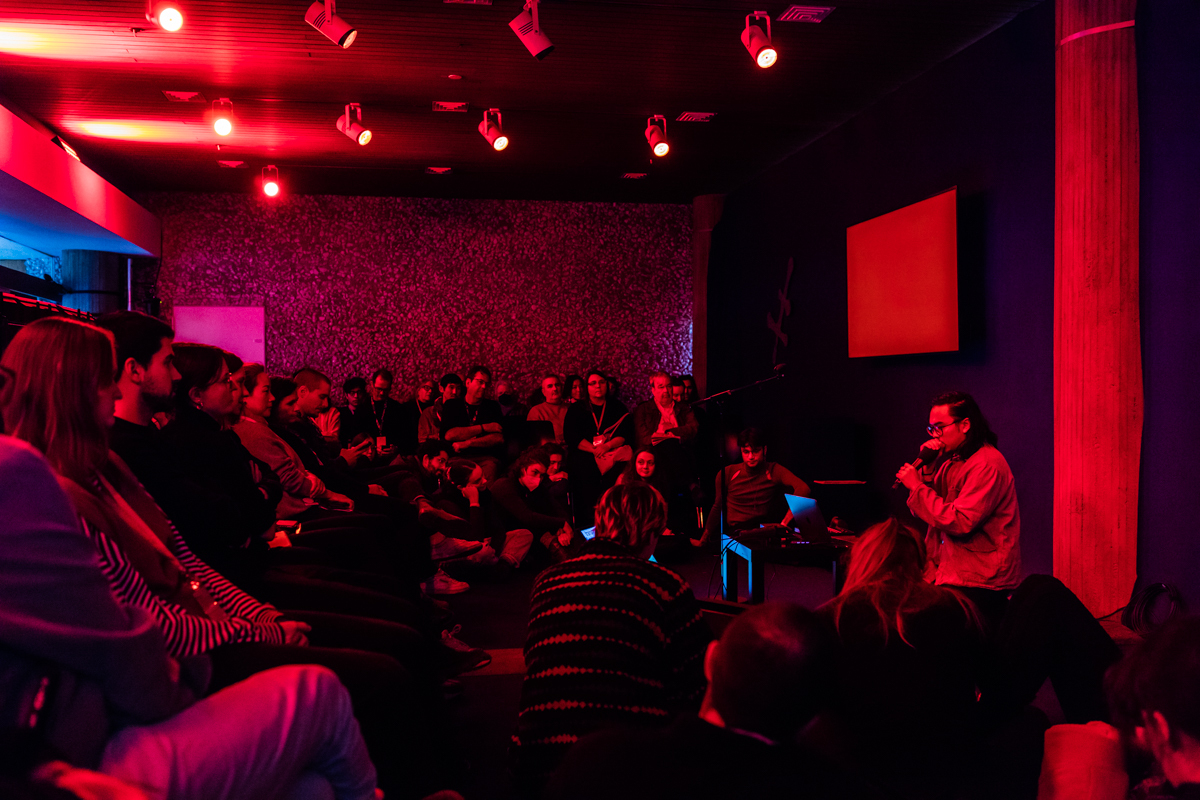mit Dennis Dizon

sumpong is a warped campfire story. Following an anituan from the Pinatubo Aeta – a communal seance where a manganito (medium) communicates with a spirit that may be causing devastation – sumpong invokes perspectives from the deity Apo Namalyari. Angered by illegal logging and the Philippine National Oil Company’s geothermal exploration, Apo is believed to have caused the eruption of Mount Pinatubo in 1991, which cooled global temperatures in the years following. Combining prose and poetry with sound and music, Dennis Dizon expands the Philippine-specific notion of “sumpong” as an affective way of understanding and acting in the animist world of a post-geoengineering volcanic winter [1]. In this research performance, come séance, Dizon conjures feelings, ritual waste, algorithmic (dis)information, hangovers of repentance, and chemtrail conspiracies, to spill soft, dissonant and critical memories on the scales, tensions, delusions, and anxieties of ecological catastrophes.
*Though particularly nuanced in meaning, in Philippine Psychology, “sumpong” is defined as a “spontaneous but often recurring and unexplainable deviation from… the norm…[as] a coping strategy in a hostile environment.”
[1] Dizon, Mark. “‘Sumpong’ Spirit Beliefs, Murder, and Religious Change among Eighteenth-Century Aeta and Ilongot in Eastern Central Luzon.” Philippine Studies: Historical & Ethnographic Viewpoints 63, no. 1 (2015): 3–38. http://www.jstor.org/stable/24672306 .

